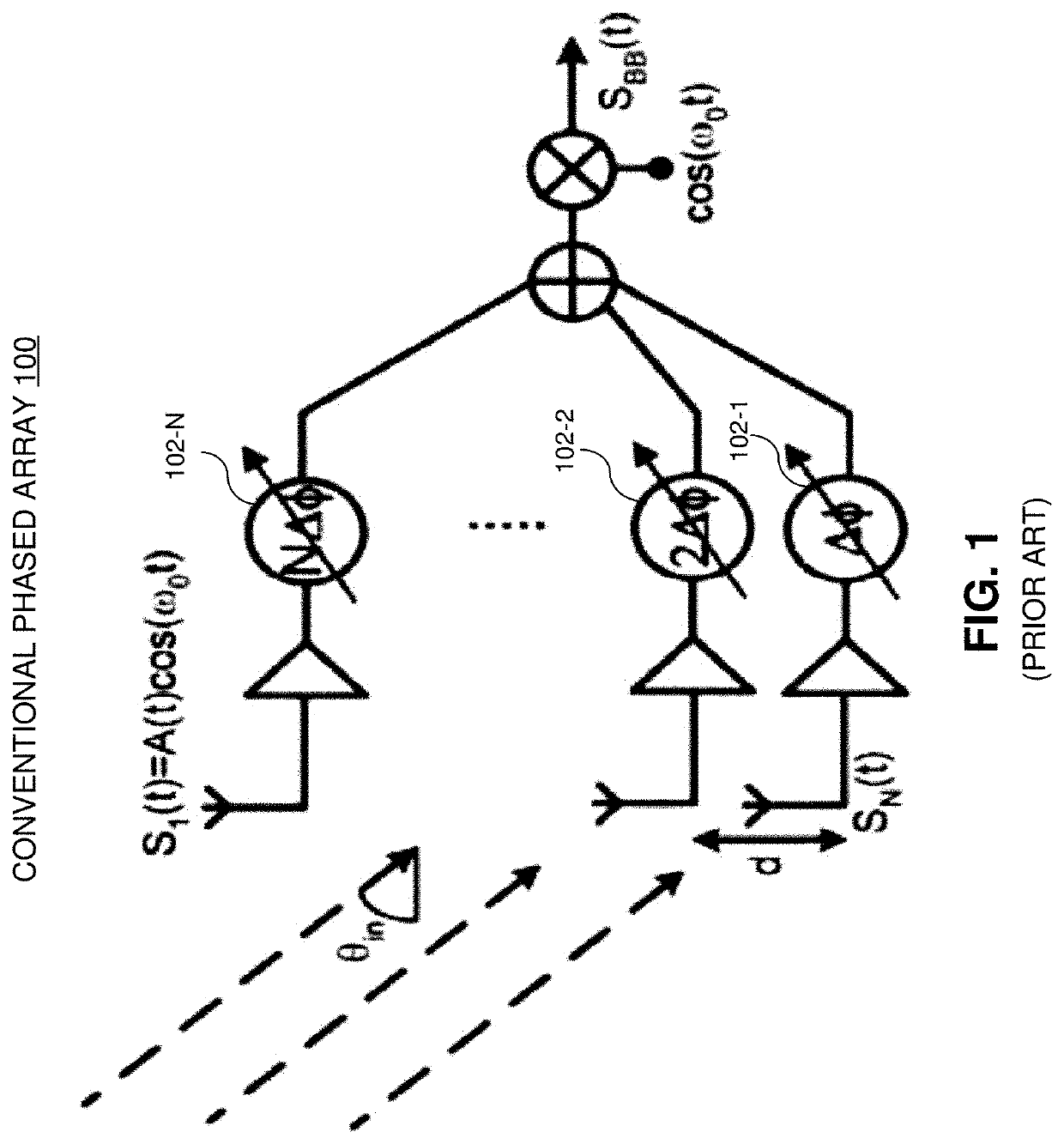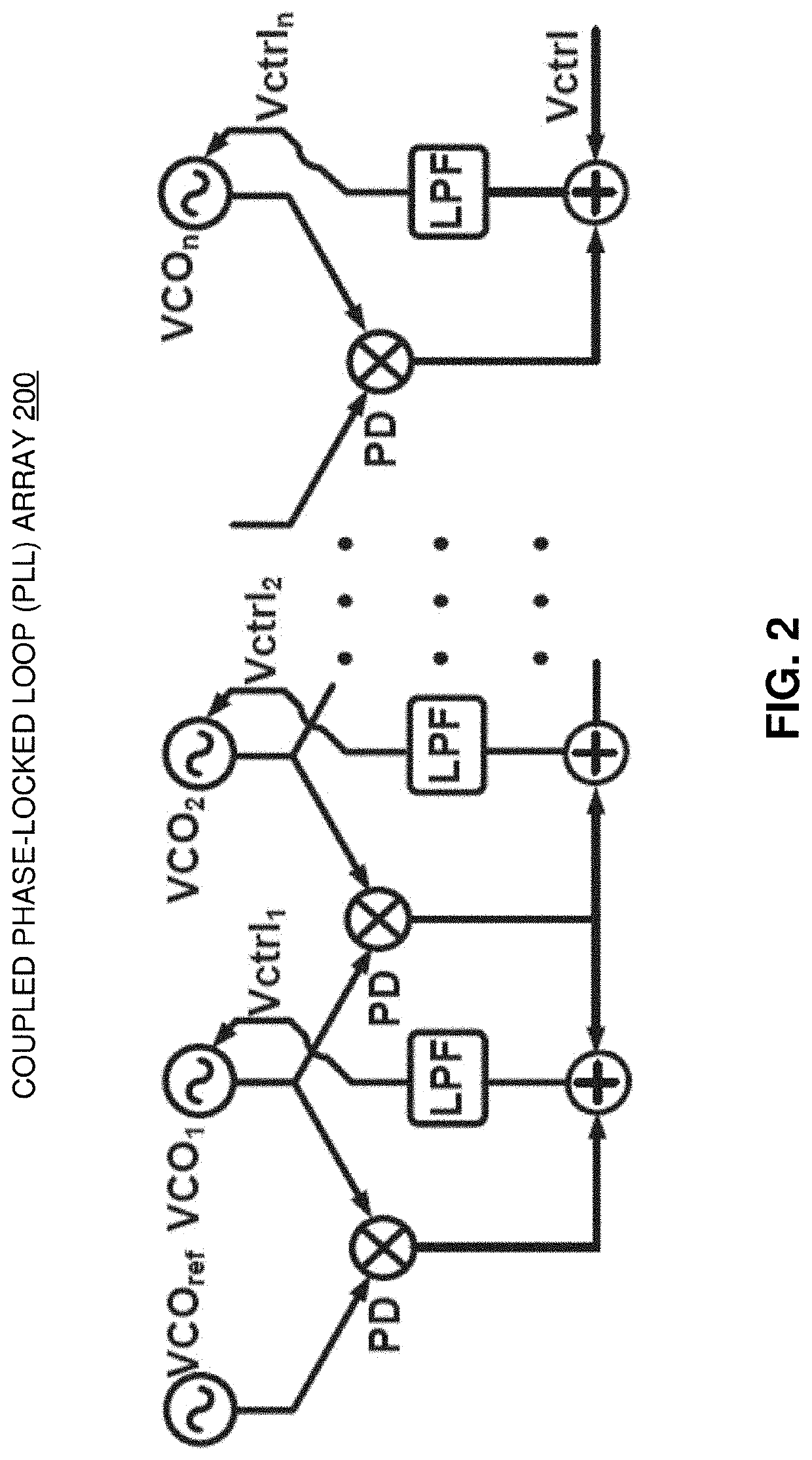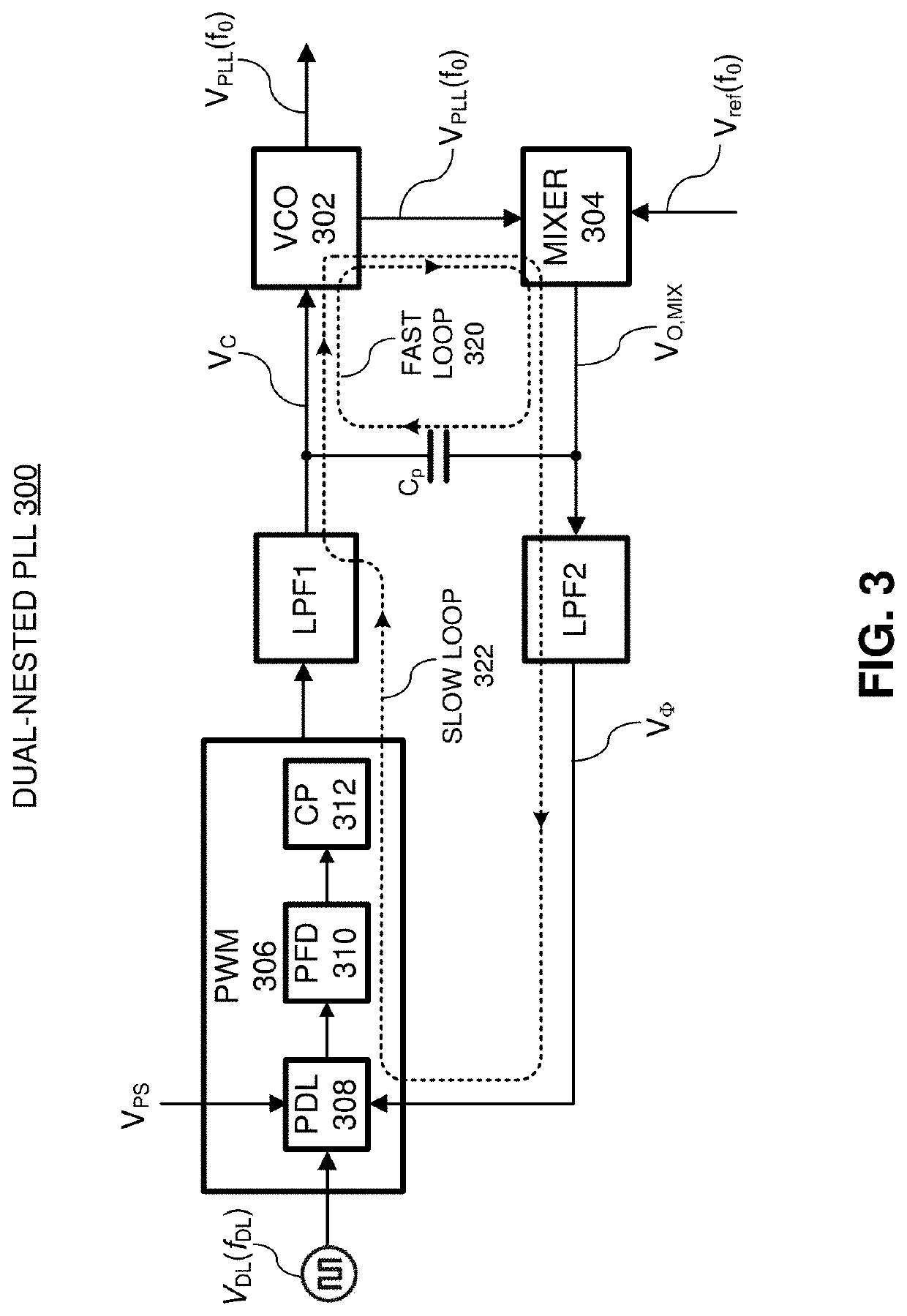Millimeter-wave scalable pll-coupled array for phased-array applications
a technology of phased arrays and millimeterwaves, applied in the direction of pulse automatic control, electrical equipment, antennas, etc., can solve the problems of high power loss/consumption caused by phase shifters at sub-thz frequencies, increase in power consumption and hence system cost,
- Summary
- Abstract
- Description
- Claims
- Application Information
AI Technical Summary
Benefits of technology
Problems solved by technology
Method used
Image
Examples
Embodiment Construction
[0061]The following description is presented to enable any person skilled in the art to make and use the disclosed embodiments, and is provided in the context of one or more particular applications and their requirements. Various modifications to the disclosed embodiments will be readily apparent to those skilled in the art, and the general principles defined herein may be applied to other embodiments and applications without departing from the scope of those that are disclosed. Thus, the present invention or inventions are not intended to be limited to the embodiments shown, but rather are to be accorded the widest scope consistent with the disclosure.
[0062]This disclosure provides various techniques, systems and architectures for generating desired phase shifts in a phased array to control the directions of radiation in a wide range of angles. Particularly, phased array architectures based on novel phase-locked-loop-coupled (PLL-coupled) phase shifting techniques for implementatio...
PUM
 Login to View More
Login to View More Abstract
Description
Claims
Application Information
 Login to View More
Login to View More - R&D
- Intellectual Property
- Life Sciences
- Materials
- Tech Scout
- Unparalleled Data Quality
- Higher Quality Content
- 60% Fewer Hallucinations
Browse by: Latest US Patents, China's latest patents, Technical Efficacy Thesaurus, Application Domain, Technology Topic, Popular Technical Reports.
© 2025 PatSnap. All rights reserved.Legal|Privacy policy|Modern Slavery Act Transparency Statement|Sitemap|About US| Contact US: help@patsnap.com



